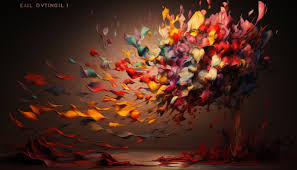Digital Horizons: The Journey from Pixel Creations to Immersive Masterpieces
Introduction
The creative process of art making has taken a turn with digital advancements providing us a more nuanced way to perceive, interpret and create artworks. Digital art has grown from basic computer graphics to full fledged immersive experiences that push the boundaries of creativity. From 1960s experimentation to the most advanced technologies of today, this essay covers all that forms part of digital art history.
The Early Days: Birth of Computer Graphics
Digital art as an artistic practice emerged in the 1960s, with the development of computer-based technologies and systems. In the early days of digital art pioneers like A. Michael Noll, Frieder Nake and Georg Nees started work on computer generated images; they used algorithms to create algorithmic patterns akin to infinite wormholes or a swirls of n-dimensional lattices which became abstract visualizations. While they were designed on mainframe computers, these early pieces of art—along with works by the likes of Frieder Nake —helped to redefine that bounds for what was considered an artwork. Digital art was born in 1965 when the first computer art exhibition took place at Technisch Hochschule Stuttgart.
The 1970s and the influence of digital tools
New tools and platforms were developed for artists during the 1970s — early 1980s with great advances in digital technology. The personal computer also allowed for the introduction of digital art for an even wider range such as with Apple II and Commodore 64 Software like adobe photo shop and Corey DRAW that were emerged in the late 1980s had transformed an artist’s experience of how to create or edit images. This period saw technology-based art establish a presence in the contemporary mainstream, with Harold Cohen and other artists like him who blurred notional distinctions between human creativity and machine dexterity via systems such as his autonomous drawing program AARON.
The 90s: The Age of the Internet and Digitisation
The massive expansion of the internet and digital tools in general during 1990s, marked a turning point on how artists create images through projection technology from traditional media. The emergence of the World Wide Web brought new opportunities for digital artists to share their work with a larger audience both on and offline. The 90s also saw a rise in net art, the first born-digital art medium which utilised the internet as its platform with artists such Olia Lialina or Jodi creating some of the most interesting pieces and writings on aesthetics online. In addition, the rise of 3D modeling software and virtual reality technology has also pushed art into new territories: artists have begun using these technologies to create fully-realized worlds in which viewers can navigate and interact.
Towards the Present & Future: An Expansion of the Creative Acreage
The main bookend notes that today, digital art is broad and diverse enough to cover almost any medium or style. Whether it is AI-generated art or Augmented Reality (AR) installations, digital artists are stretching creativity to new limits. The emergent blended art industry of Artificial Intelligence, Machine Learning and Virtual Reality combine together to put human creativity in a new perspective mediated by technology. Unlike traditional art, digital are unsteadily confounds out definitions of what qualifies as artwork and a forward look into the new age of creation in the world.
Conclusion:
That may sound like it doesn’t amount to much, but considering what digital art was — a fringe curiosity that hardly any institution would exhibit in the 1960s and ’70s — this is huge. These characteristics make digital art one of the most dynamic and accessible forms of contemporary creativity that has successfully absorbed new technologies, while remained open to innovation. And the deeper we go into this digital age, is how much more relevant its effect will be not just on art but also in our general cultural context.
Written By: Musaffa Mushtaq
